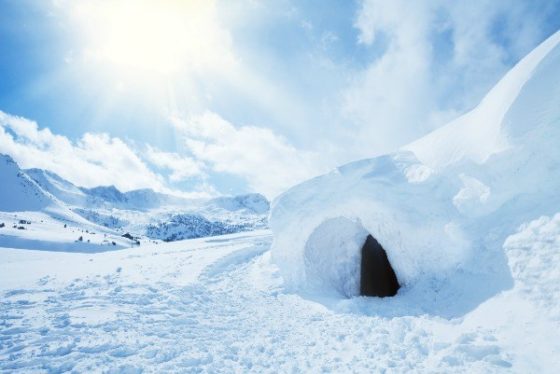Threat Matrix: The Top 7 Late 2025 Threats Facing Preppers

Podcast: Play in new window | Download
Our threat landscape is constantly shifting. Month to month, season to season, the threats we face are continually evolving. Some rise in risk, some fall out of favor, and others stay a threat all the time. This isn’t about theoretical problems or distant concerns—it’s about what’s already showing signs of strain in real life. From wild weather to social tension, economic pressure to digital vulnerabilities, the second half of 2025 is shaping up to be a possible test for many people.
If you’re paying attention, you’ve probably felt it and are watching it. Headlines pile up, but certain patterns stand out. And it’s not the far-off stuff that matters most—it’s the threats already unfolding that may develop more over the next several months.
This breakdown covers the seven threats that are most likely to disrupt your life by the end of January—ranked by how likely they are to happen. Each one comes with simple, actionable prep tips you can act on today—because that’s what matters.
Disclaimer: This is not saying that these will happen, but rather presenting you with what to keep your eyes open for in case they do happen.
TL;DR: The seven high-impact threats facing U.S. preppers in late 2025 are extreme weather, civil unrest, grid failures, economic instability, large-scale attacks, geopolitical conflict, and cyberattacks.
Quick Look at What You’ll Learn
Threat Matrix: The U.S. Top 7 Ranked by Likelihood and Impact
The following list ranks the seven most pressing threats by their likelihood over the next 90 days and the severity of their potential impact. This ranks threats based on probability and impact, enabling you to identify the most likely causes of problems and take proactive steps to address them. Each threat includes a Prep Tip to help you take action right now.
| Threat | Likelihood (Nov 2025–Jan 2026) | Impact |
|---|---|---|
| Extreme Weather | Very High | High (Regional) |
| Civil Unrest | Very High | High (Localized) |
| Localized Grid Failures | High | Medium (Regional) |
| Economic Instability Worsens | Medium | Widespread (National) |
| Large-Scale Attack on U.S. | Low | High (Regional) |
| Cyberattacks | Very Low | Catastrophic (Varied) |
| Geopolitical/Nuclear | Very Low | Existential (Global) |
1. Extreme Weather and Climate Cascades
La Niña is expected to drive hurricane activity through the end of the year, with the National Hurricane Center tracking a late-season disturbance off the Atlantic as a potential hurricane threat. It’s an indicator that the predictions of a very snowy winter in the northeast and a dry winter in the southwest are accurate. That’s a southwest which is 65.5% in drought, which drives up food prices and adds strain to already fragile systems. Regional flooding can block roads, isolate areas, contaminate water supplies, and knock out power.
As you know, extreme weather doesn’t always give a warning. It cuts supply lines, destabilizes access to essentials, and taxes infrastructure in ways that ripple across the map. It’s not just a weather event—it’s often the spark that sets off the next local and personal crisis.
Weather-related events also have a way of exposing other weak points—power systems, supply chains, and even social stability. When roads close and shelves go empty, frustration and panic start rising. That shift can quickly spill over into unrest, which is where our next focus lies.
Extreme Weather Prepping Tip
- Ensure your emergency kits and bags are prepared for weather disruptions, and regularly rotate seasonal gear—replacing summer items with cold-weather essentials to maintain adaptability.
- Keep food dry and edible by inspecting seals regularly and checking expiration dates. This ensures long-term readiness with movable and stackable waterproof bins.
- Know your local area—use local weather alerts or apps to monitor real-time changes and adjust routes as needed—mark routes to high ground on both GPS and paper maps—and rehearse driving those routes.
2. Civil Unrest with Worsening Social Fragmentation
Economic pain and political divides fuel unrest, with 40% of Americans fearing civil war within a decade. DHS warns of politically related violence through January, amplified by media and political rhetoric. X posts highlight ICE protests that devolve into urban riots as immediate risks. Civil unrest doesn’t just show up on the news—it can pop up with no warning, block roads, clog emergency services, and make everything very unsafe. When the system’s already stretched thin, public safety efforts and supply trucks might not get where they’re needed. Violence can spread faster than help does—shutting down life as we know it.
Civil Unrest Prepping Tips
- Carry pepper spray or other legal self-defense tools.
- Train in early threat recognition through situational awareness—work on noticing problems before they start, and reacting well if they’re missed.
- Identify fallback spots you could go to if an area devolves—and know how to reach them from places you’re regularly at, like work, school, or the grocery store.
- Always be ready to head towards daylight if you see a crowd forming.
3. Localized Grid Vulnerabilities
Localized grid failure remains one of the most likely and system-breaking threats we face. Power systems are already strained heading into winter—vulnerable to aging infrastructure, copper theft, severe weather, and cyberattacks. Outages have risen 20% since 2019, according to EnergySage, and even routine storms have knocked out power for days in some places.
It doesn’t take a massive event—just a downed line, a blown transformer, or simple negligence. Grid loss affects more than lights: water systems, gas pumps, card readers, traffic signals, and cellular towers can all go offline within hours. In a worst-case scenario, outages overlap with unrest or cyberattacks, stretching recovery time and putting responders on their heels.
Grid Vulnerabilities Prepper Tip:
Begin with basic power backups that are easy to set up, including:
- Small inverter generator
- Sealed propane tank for heating and cooking
- Foldable solar panel (~$100) to recharge battery packs
- Store your key electronics in an off-the-shelf Faraday bag or a DIY Faraday setup
4. Economic Instability Worsens
Prices are still high, even if inflation isn’t climbing as fast as before. Most people haven’t seen relief—just smaller portions and bigger bills. More Americans are relying on credit cards to cover daily expenses, and that growing debt pressure signals a fragile system already under strain.
Ray Dalio, founder of Bridgewater Associates, calls it a “debt-induced heart attack,” warning that rising debt and shrinking savings raise the odds of a banking crisis. And when people can’t pay, pressure builds—and that’s how unrest often starts. If defaults rise, it could cause more disruptions to society, increase crime, and strain supply chains even more.
Economic Instability Preparedness Tip
Start small and build week by week. Focus on what stretches your budget now—dry staples, bulk canned goods, and shelf-stable meals that you already eat. Most preppers reading this already have 30 days covered—so use this time to expand what you’ve got and tighten up any gaps.
Hold value in items people actually trade: silver coins, extra tools, sealed food, batteries. Make sure you’re getting connected with and engaging the local networks and contacts.
5. Large-Scale Attack on U.S.
We know that terrorists crossed into the United States when the borders were open. Law enforcement has already disrupted several potential plots in 2025 linked to individuals who illegally crossed our borders. Add to that the fact that countries like Afghanistan create new identities and issue internationally recognized passports in support of terrorism. Confirming all of this, the government says the threat level remains elevated—especially around political events, the holidays, and any place where crowds gather.
Attacks don’t need to be complex to cause disruption—a low-tech strike on a crowded space can overwhelm emergency services and trigger a broader mass panic and fear. This type of scenario becomes even more dangerous when layered over other stressors like economic hardship or power outages. And some worry that a major domestic attack—like we saw with 9/11—could be used again to justify sweeping government controls. Think digital IDs, expanded surveillance, restrictions on purchases, and tighter tracking of individuals—just as the Patriot Act paved the way for long-term surveillance after 2001.
Prepping Tip for Large-Scale Attack on the U.S.:
- Practice early threat detection through situational awareness—monitor your baseline—read crowds, monitor exits, and watch for chokepoints
- Stay connected with trusted neighbors or local contacts who can alert you to potential issues.
- Identify multiple exit routes from places you go regularly—work, store, events—and walk those routes.
- Be trained in and carry legal, non-lethal, and lethal defensive tools like pepper spray and concealed carry firearms when in public.
6. Cyberattacks on Critical Infrastructure
Cyber threats aren’t abstract anymore—they’re an increasingly troublesome reality. From hospitals locked down to meat plants shut down, it’s clear digital systems are soft targets. State-backed hackers are refining their tools using AI and exposing new vulnerabilities every day. IBM’s 2025 index shows ransomware attacks are becoming more aggressive and targeting a wider range of infrastructure.
We tend to think of cyberattacks in the form of a grid-down blackout. However, if your bank app freezes or ATMs stop working for a week, how long could you manage? That’s where this gets real.
Cyberattack Prepper Tips:
- Keep cash on hand in small bills in case card systems go offline
- Have paper maps and printed phone numbers in your bag or glovebox
- A >$50 hand-crank radio can keep you informed when the internet and TV go dark
- Use a simple Faraday bag or metal container to shield backup electronics (USB drives, radio, spare phone)
- Scan your essential documents and save them on an offline USB drive
7. Geopolitical Flashpoints and Nuclear Risks
Russia’s not stopping its fight with Ukraine, and North Korea is involved. China continues to test the boundaries around Taiwan. Nuclear-armed India and Pakistan love to trade blows, and it has more people asking: what happens if this spills over? The 2025 Threat Assessment warns about rising tensions, disinformation, and the risk of one side pushing too far and triggering something bigger than intended. A sharp rise in global tensions doesn’t have to lead to an existential nuclear crisis. Instead, it can freeze up supply chains, spike gas prices, and cause major market disruptions, among other effects. That’s the kind of “fallout” worth planning for.
Geopolitical Flashpoints Preparedness Tips
- Keep your gas tank at least half full—fuel shortages often follow military escalations.
- Do you have a systematic process to lock down your house so that you know everything is secure?
- Double-check your go-bags and ensure you have a PACE plan in place in case you need to evacuate in a hurry.
- If you live near a port, base, or government facility, consider at least having a good respirator mask or filter as a short-term layer of protection.
- Identify the most interior room in your home and reinforce it with dense materials—such as water containers, bookshelves, etc.
The Bottom Line
These are the seven threats most in play right now—each with the potential to disrupt your life, even in small but serious ways. The goal isn’t to chase headlines or worry about what might happen five years down the road. It’s to sharpen your edge for what’s most likely over the next few months.
Check your basics. Make sure you’ve got your preps, aka your Survival Pyramid, squared away. Your information flow, safety and security, medical needs, shelter, water, sleep, food, and community. Identify what’s missing, fill the gaps, and run through your plans like it’s routine—not a last-minute scramble. You know what to do. Leave a comment below with your questions if you don’t.
Keep it simple. Keep it consistent and stay ahead of the curve.
Additional Resources
Read the full article here









